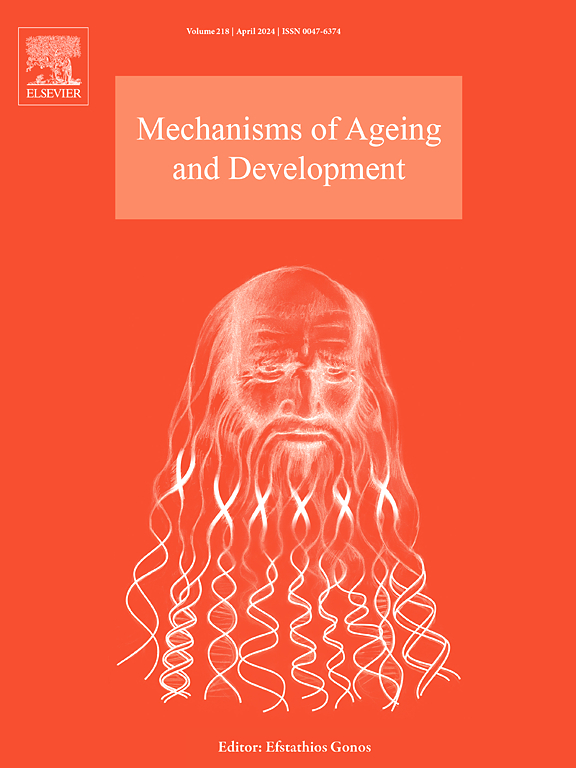Unlocking diagnosis of sarcopenia: The role of circulating biomarkers – A clinical systematic review
IF 5.1
3区 医学
Q2 CELL BIOLOGY
引用次数: 0
Abstract
Sarcopenia, the gradual loss of muscle mass, strength, and function with age, poses a significant risk to older adults, making early diagnosis crucial for preventing disability and enhancing quality of life. Biomarkers are vital for the early detection, monitoring progression, and assessing the efficacy of treatments for sarcopenia, offering a detailed evaluation of muscle health. This systematic review examined the clinical potential of circulating biomarkers in sarcopenia by analyzing studies up to May 2024 from PubMed, Scopus, Web of Science. A total of 45 studies involving 641,730 patients were reviewed, revealing notable biomarker differences between sarcopenic and non-sarcopenic individuals. Sarcopenic patients exhibited lower levels of certain microRNAs, hemoglobin, albumin, and anti-inflammatory factors, alongside higher levels of red and white blood cells, pro-inflammatory factors, growth factors, matrix proteins, free thyroxine, cortisol, and adiponectin. Additionally, they had lower levels of irisin, free triiodothyronine, and insulin, with reduced phosphatidylcholines and elevated spermidine. The studies were generally of fair to good quality, but due to heterogeneity, a meta-analysis was not feasible. The review underscores the need for standardized biomarkers and diagnostic criteria and suggests that improving outcomes for sarcopenic patients may involve addressing inflammation, metabolic, and hormonal issues through nutrition, medication, and exercise.
解开 "肌肉疏松症 "诊断之谜:循环生物标志物的作用--临床系统综述。
肌肉疏松症是一种随着年龄增长而逐渐丧失肌肉质量、力量和功能的疾病,对老年人构成了极大的威胁,因此早期诊断对于预防残疾和提高生活质量至关重要。生物标志物可提供肌肉健康的详细评估,对早期发现、监测进展和评估肌肉疏松症的治疗效果至关重要。本系统性综述通过分析截至 2024 年 5 月的 PubMed、Scopus 和 Web of Science 上的研究,探讨了循环生物标志物在肌肉疏松症中的临床潜力。共回顾了45项研究,涉及641730名患者,发现了肌肉疏松症患者与非肌肉疏松症患者之间存在明显的生物标志物差异。肌肉疏松症患者的某些微RNA、血红蛋白、白蛋白和抗炎因子水平较低,而红细胞和白细胞、促炎因子、生长因子、基质蛋白、游离甲状腺素、皮质醇和脂肪连素水平较高。此外,他们的鸢尾素、游离三碘甲状腺原氨酸和胰岛素水平较低,磷脂酰胆碱降低,精胺升高。这些研究的质量一般在中等到良好之间,但由于存在异质性,因此无法进行荟萃分析。综述强调了标准化生物标志物和诊断标准的必要性,并建议改善肌肉疏松患者的预后可能需要通过营养、药物和运动来解决炎症、代谢和激素问题。
本文章由计算机程序翻译,如有差异,请以英文原文为准。
求助全文
约1分钟内获得全文
求助全文
来源期刊
CiteScore
11.10
自引率
1.90%
发文量
79
审稿时长
32 days
期刊介绍:
Mechanisms of Ageing and Development is a multidisciplinary journal aimed at revealing the molecular, biochemical and biological mechanisms that underlie the processes of aging and development in various species as well as of age-associated diseases. Emphasis is placed on investigations that delineate the contribution of macromolecular damage and cytotoxicity, genetic programs, epigenetics and genetic instability, mitochondrial function, alterations of metabolism and innovative anti-aging approaches. For all of the mentioned studies it is necessary to address the underlying mechanisms.
Mechanisms of Ageing and Development publishes original research, review and mini-review articles. The journal also publishes Special Issues that focus on emerging research areas. Special issues may include all types of articles following peered review. Proposals should be sent directly to the Editor-in-Chief.

 求助内容:
求助内容: 应助结果提醒方式:
应助结果提醒方式:


